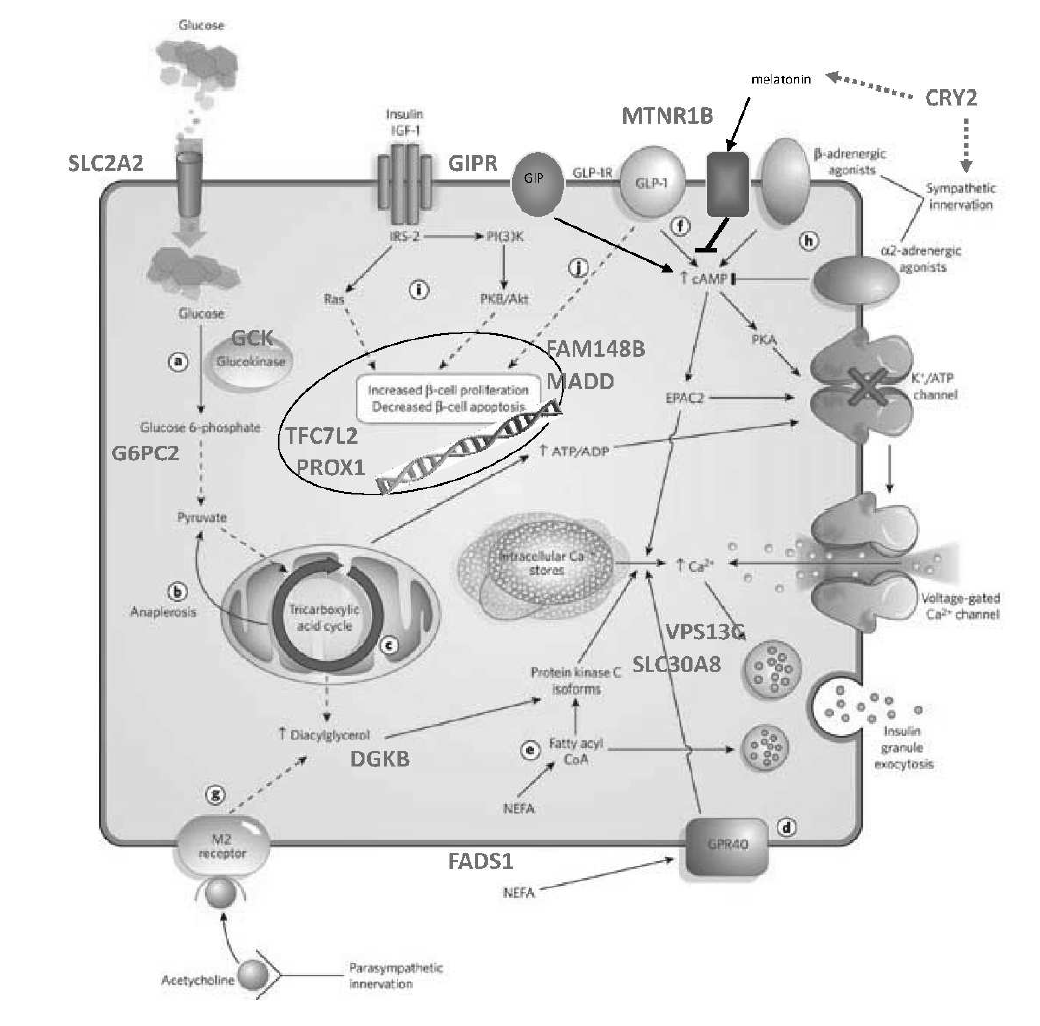Detailed physiologic characterization reveals diverse mechanisms for novel genetic loci regulating glucose and insulin metabolism in humans

OBJECTIVE:
Recent genome-wide association studies have revealed loci associated with glucose and insulin-related traits. We aimed to characterize 19 such loci using detailed measures of insulin processing, secretion, and sensitivity to help elucidate their role in regulation of glucose control, insulin secretion and/or action.
RESEARCH DESIGN AND METHODS:
We investigated associations of loci identified by the Meta-Analyses of Glucose and Insulin-related traits Consortium (MAGIC) with circulating proinsulin, measures of insulin secretion and sensitivity from oral glucose tolerance tests (OGTTs), euglycemic clamps, insulin suppression tests, or frequently sampled intravenous glucose tolerance tests in nondiabetic humans (n = 29,084). RESULTS The glucose-raising allele in MADD was associated with abnormal insulin processing (a dramatic effect on higher proinsulin levels, but no association with insulinogenic index) at extremely persuasive levels of statistical significance (P = 2.1 x 10(-71)). Defects in insulin processing and insulin secretion were seen in glucose-raising allele carriers at TCF7L2, SCL30A8, GIPR, and C2CD4B. Abnormalities in early insulin secretion were suggested in glucose-raising allele carriers at MTNR1B, GCK, FADS1, DGKB, and PROX1 (lower insulinogenic index; no association with proinsulin or insulin sensitivity). Two loci previously associated with fasting insulin (GCKR and IGF1) were associated with OGTT-derived insulin sensitivity indices in a consistent direction.
CONCLUSIONS:
Genetic loci identified through their effect on hyperglycemia and/or hyperinsulinemia demonstrate considerable heterogeneity in associations with measures of insulin processing, secretion, and sensitivity. Our findings emphasize the importance of detailed physiological characterization of such loci for improved understanding of pathways associated with alterations in glucose homeostasis and eventually type 2 diabetes.





